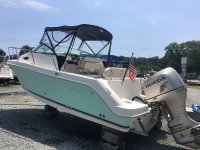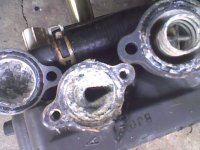Hi All,
First post here. Several people recommended this forum on ThehullTruth. Looks like a great group.
I currently have a 2004 Aquasport with a 175 2S Johnson. We are looking at buying a 2004 Robalo R225 with a 2004 Honda 4S 200HP.
We really like the boat but I am not familiar with Honda outboards. Can anyone give some feedback on this year motor? It has 250 hours on it and looks well taken care of. I will be keeping bit on a mooring in saltwater and will not be able to flush after each use do to the mooring.
I have seen a lot of posts to stay away and about corrosion issues. Any thoughts?
Thanks,
Jared
First post here. Several people recommended this forum on ThehullTruth. Looks like a great group.
I currently have a 2004 Aquasport with a 175 2S Johnson. We are looking at buying a 2004 Robalo R225 with a 2004 Honda 4S 200HP.
We really like the boat but I am not familiar with Honda outboards. Can anyone give some feedback on this year motor? It has 250 hours on it and looks well taken care of. I will be keeping bit on a mooring in saltwater and will not be able to flush after each use do to the mooring.
I have seen a lot of posts to stay away and about corrosion issues. Any thoughts?
Thanks,
Jared



